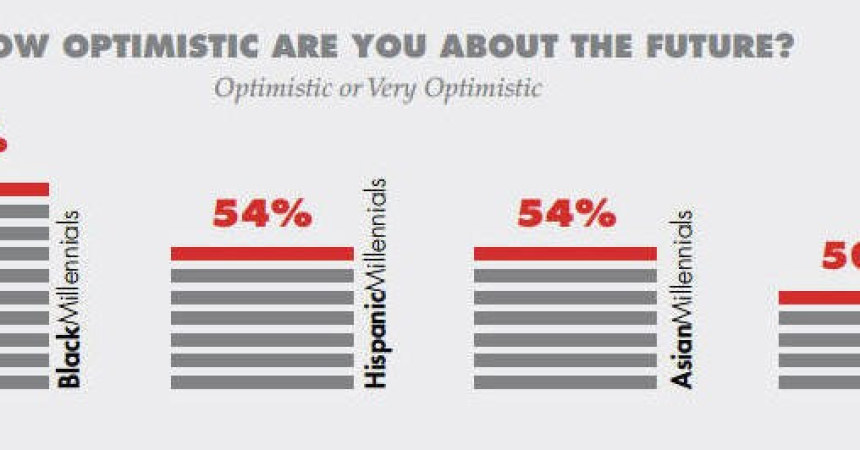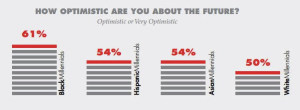
New Study: Black millennials more optimistic about their future than Whites, Hispanics
Special to the Outlook from Trice Edney News Wire
A newly released study of Millennials reveals that Black consumers between the age of 18-35 are more optimistic about their futures than Hispanics, Asians and Whites of the same age. Young African-Americans were also far more likely (59 percent) to say “anyone can achieve their dreams if they try hard enough.”
The report is based on 2016 data from a collaborative research study conducted by Richards/Lerma (known for its expertise in Hispanic market advertising) and The University of Texas, Stan Richards School of Advertising and Public Relations. It was designed to gain a more thorough understanding of the complexities of today’s highly diverse multicultural Millennial group.
“One of the most staggering findings of all in the midst of our nation’s current racial upheaval is that Black Millennials are more optimistic than the other Millennial segments. Although they are less likely to say they are currently satisfied with life, they are the most optimistic about the future,” the report says.
The study, “Millennials Deconstructed,” consisted of a national online sample of Black, Hispanic, Asian, and White Millennials between the ages of 18 and 34 and Hispanics 35+ for comparison, and explored three separate topics: political beliefs and attitudes, the American dream, and media behavior. A series of qualitative one-on-one interviews were conducted following the quantitative study to gain additional insights into survey findings.
“Although our initial intent in this report was to strictly define and deconstruct the American Dream by racial/ethnic segment, a much more interesting story emerged after analyzing the results,” the report says. “When zooming into the differences between the segments, the data reached out and smacked us with untold cultural stories that challenge popular notions about each race and ethnicity. While the differences between the way the groups define and relate to the American Dream are interesting, what’s far more compelling is how their cultural and ethnic background shapes their responses in counterintuitive ways. In other words, it’s not only ‘the what’ we want to talk about, it’s the often neglected how and why.”








